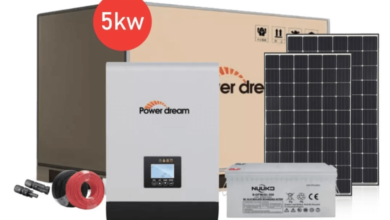How to balance the injection volume and holding pressure of an injection molding machine?

Achieving the perfect balance between shot size and holding pressure is critical to producing high-quality parts on an injection molding machine. Too little shot size can result in short shots, while insufficient holding pressure can result in sink marks and voids; conversely, too much shot size or holding pressure can result in flash, increased residual stresses, and premature mold wear. This article explores key areas—from basic definitions to advanced science-based molding techniques—to show how to fine-tune injection molding machine parameters for optimal part performance, cost-effectiveness, and process reliability.
Shot Size Control on an Injection Molding Machine
The shot size is determined by the injection molding machine’s screw stroke and barrel design. Accurately setting the shot size ensures that the mold cavity is filled without overfilling. First, measure the cavity volume and adjust for material shrinkage to calculate the ideal shot size. Most modern machines allow you to enter this value directly into the control interface, limiting the screw stroke to the set shot size.
In addition, consistency from shot to shot is critical. Changes in the material’s melt temperature or moisture content can change viscosity and affect flowability, so maintaining tight temperature control and pre-drying hygroscopic resins can help stabilize shot size. Repeatability testing should strive for a deviation of less than ±0.2%. Consistent shot size prevents undershot and lays the foundation for the practical application of holding pressure, reduced scrap rate, and dimensional accuracy.
The role of holding pressure in injection molding machine performance
The machine immediately applies holding pressure after the screw retracts to compensate for the shrinkage of the plastic during cooling and solidification. In the injection molding machine, the timely application of holding pressure can maintain the holding pressure in the thicker part of the part, thereby preventing sink marks and internal voids. The ideal holding pressure is usually 50% to 70% of the peak injection pressure, but this value varies according to material properties and part geometry.
The holding time must exceed the gate solidification time to lock the material. You can empirically determine the gate solidification time by applying a dye marker, running a cycle, and measuring the thickness of the dye layer. Once the gate solidifies, there is no benefit in further holding pressure, which only increases the clamping force. You should set the optimal holding time to a safety margin of 10% to 20% higher than the solidification time. Balancing the injection molding machine’s holding pressure and holding time maintains surface finish while preventing over-holding, warping, and elevated residual stresses.
Interdependence of shot size and holding pressure
Shot size and holding pressure are interrelated: the operator must match the shot size during injection with the machine’s holding pressure capability during the holding phase. Suppose you use a shot size that is too high on your injection molding machines to fill the mold. In that case, the holding pressure must exceed the pressure of the material backflow to accommodate the excess melt, risking flash or gate degradation. Conversely, high holding pressures will not fill the cavity if the shot size is too low, resulting in undershot and dimensional inaccuracies.
A practical approach is to conduct a series of molding trials, gradually adjusting shot size and holding pressure. To find a stable operating zone, plot part weight, dimensional deviation, and defect rate versus injection/holding parameters. This systematic optimization ensures that your injection molding machine operates optimally and minimizes scrap.
Optimize injection molding machine shot size based on material properties.
Different polymers exhibit different flow and shrinkage characteristics, requiring customized shot size settings on the injection molding machine. Semi-crystalline resins such as polypropylene shrink more than amorphous plastics such as ABS, so larger shot sizes must account for volume changes. In addition, high-viscosity engineering resins may require higher injection speeds to fill thin-walled geometries, which affects the optimal shot size setting. First, consult the resin datasheet for its viscosity and shrinkage data. Then, the operator will perform a flow and packing study to observe how the material flows at a set volume. Adjust the shot size to achieve a balanced fill length while avoiding excessive shear heating, which can degrade the polymer’s properties.
The impact of packing pressure settings on part quality
Packing pressure must be adjusted based on part geometry to ensure uniform packing. Different wall thicknesses on the injection molding machine require different pressure curves; thick-walled sections require higher pressure and longer packing time, while thin-walled sections require less pressure and packing time. Advanced machine control capabilities allow you to program multi-stage packing schemes: fill thick-walled sections with a higher initial packing pressure, then drop to a lower holding pressure to prevent over-packing thin-walled areas. Use part deflection gauges and X-ray imaging to detect internal voids and assess packing adequacy. Iterate through multi-stage packing pressure adjustments on the injection molding machine and observe part weight, sink mark depth, and dimensional stability.
See also The Ultimate Guide to Using Instagram for Small Businesses
Mastering the Balance of the Injection Molding Machine
Balancing shot size and packing pressure is both an art and a science, requiring a deep understanding of material properties, mold design, and machine performance. By understanding the interaction between shot size, packing pressure, and packing time and leveraging advanced process monitoring and scientific molding techniques, manufacturers can optimize injection molding machines




